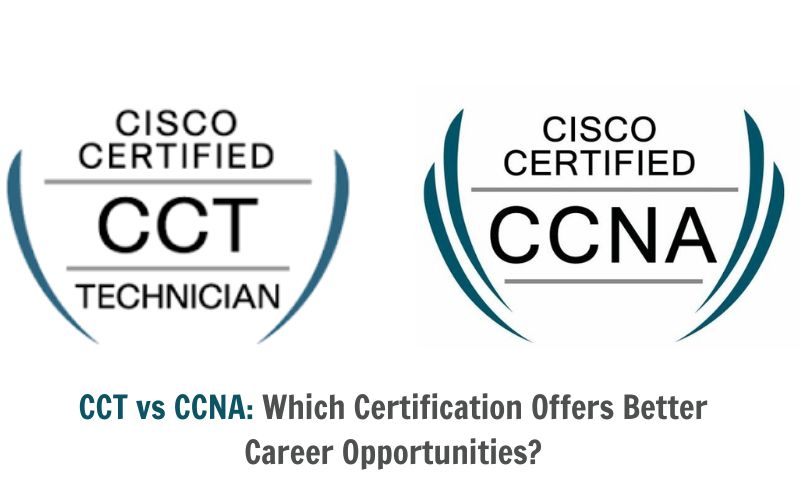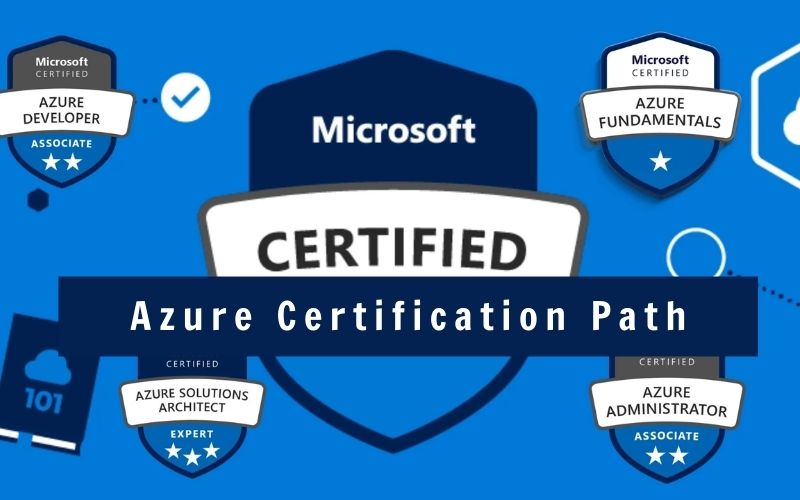In this comprehensive guide, IT Exams covers everything you need to know about the Aws solution architect certification path. Learn about the different certification levels, exam content domains, recommended training, and exam preparation resources. Discover career opportunities and salary expectations for AWS Solution Architects, and get insights into the future outlook of AWS technology. Whether you’re a beginner or a seasoned professional, our guide on the AWS Solution Architect certification path has got you covered.
What Is AWS?
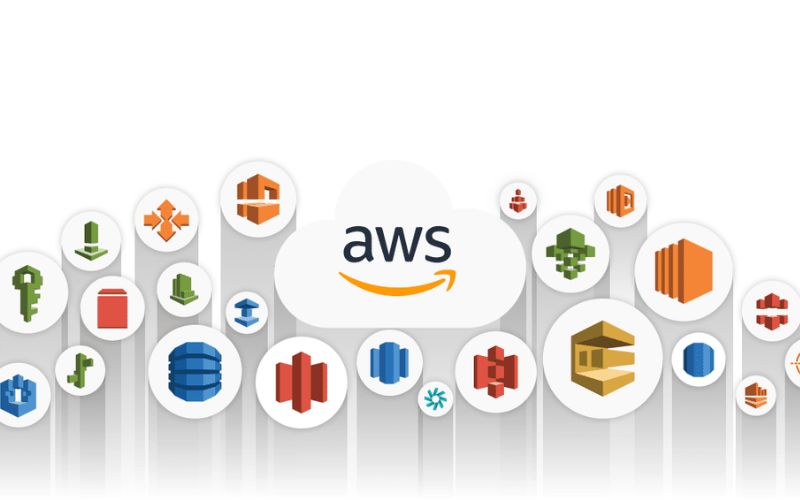
The Amazon Web Services (AWS) platform, which is the world’s most complete cloud platform, offers more than 200 fully featured services from data centers situated all over the world.
Amazon Web Service is a cloud computing platform that offers scalable and cost-effective cloud computing solutions. AWS is a comprehensive, user-friendly computing platform. The platform is built using a mix of infrastructure as a service (IaaS), platform as a service (PaaS), and packaged software as a service (SaaS).
AWS is a widely used cloud platform that provides numerous on-demand activities such as computational power, database storage, content distribution, and so on to help businesses develop and flourish. Some of the world’s top corporations, including General Electric, SPLUNK, Samsung, Unilever, Netflix, Kellogg’s, ESPN, and Twitter, use AWS for the aforementioned goals. AWS is also used by medium-sized businesses in areas like media, medical, technology, retail, and manufacturing. They utilize AWS to host their services, handle large data, and forecast user behavior.
AWS often operates in a variety of configurations according to the needs of the user. The user must, however, be able to view the type of configuration utilized as well as the specific server map in relation to the AWS service.
On this website, we offer hundreds of free AWS Solution Architect Associate exam questions to help you be familiar with the real exam format!
Advantages And Disadvantages Of AWS
Pros of AWS
The following are the benefits of using AWS services:
- AWS enables enterprises to continue using their existing programming paradigms, operating systems, databases, and infrastructures.
- It is a low-cost service that lets you pay just for what you need, with no long-term or up-front obligations.
- You will not have to pay for the operation and maintenance of data centers.
- Provides quick deployments
- Capacity may be simply added or removed.
- You get instant cloud access with boundless capacity.
- When compared to private/dedicated servers, the total cost of ownership is quite inexpensive.
- Offers Billing and management are now centralized.
- Offers Capabilities in Hybrid
- With a few clicks, you may deploy your application in numerous areas throughout the world.
Cons of AWS
- If you want more urgent or extensive assistance, you must choose a premium support plan.
- When you migrate to the cloud, Amazon Web Services may encounter certain frequent cloud computing challenges. Downtime, for example, restricted control, and backup protection.
- AWS establishes default resource restrictions that vary by location. Images, volumes, and snapshots are among the resources available.
- Hardware-level changes occur in your program, which may result in poor performance and use of your apps.
Who Is An AWS Solution Architect?

An AWS Solutions Architect’s primary responsibility is to deliver applications to infrastructure in the AWS cloud. Let us take a step back and examine why businesses are migrating to the cloud. One of the primary reasons is that they do not have to spend on-premises infrastructure. Isn’t it obvious? In many situations, this was not the case—just ask the early users who experienced price shock when they received their first bill. Here is where AWS Solutions Architects come into play. It is their obligation to build a design that not only saves money but also considers usability, dependability, scalability, and performance.
AWS Solutions Architects are also in charge of mitigating risks that a company may encounter, including data breaches, computation mistakes, and application outages. This necessitates a thorough grasp of how to put all of the AWS cloud’s components together to produce the most secure cloud environment imaginable.
AWS Solution Architect Salary Expectations
In 2018, the 2018 IT Skills and Salary Survey gathered data from 16,000 workers, 807 of them were AWS certified.
Average Salary for an AWS Solutions Architect
AWS solutions architect certification is estimated to be the highest-paying qualification in the United States, with an average yearly compensation of $118,266.
Outside of the United States, nations like Canada, Australia, the United Kingdom, Malaysia, Singapore, the United Arab Emirates, and India are excellent places to work for AWS solution architects. The tables below illustrate AWS solutions architect salaries at the beginning, intermediary, manager, and late-career levels in the countries stated above. This information was gathered from Payscale.
AWS Certification Salary In the US
In the United States, an entry-level AWS Solutions Architect salary is $138,000 per year. The average income for an AWS Senior Solutions Architect in the United States is $276,000 per year.
The following is a sample of the typical US compensation for AWS-certified employment in 2022.
- $171,000 for AWS Certified Cloud Practitioner
- $159,033 for AWS-certified solutions architect
- $158,777 for AWS Certified SysOps Administrator
- $125.000 for AWS Certified DevOps Engineer
How To Become An AWS Solutions Architect?

To obtain certification, you must pass the AWS Solutions Architect – Associate level test. The following are some examination specifics:
- The exam score ranges from 100 to 1000 points, with 720 being the minimum passing score. Passing grades are established statistically, which means they might vary depending on the difficulty of the exam.
- The AWS Solutions Architect Associate certification test costs $150, and there is a $20 practice exam available. The professional-level examination costs $300.
- The time limit is 130 minutes, and the questions are of two types: multiple-choice and multiple responses.
- The test is available in a variety of languages, including English, Japanese, Korean, and Simplified Chinese.
AWS Solution Architect Certification Path
These exams are made up of a set of independent tests that you may take at an AWS certification partner site or from the convenience of your own home. Candidates who pass a test earn a badge that they may post on their LinkedIn profile, CV, or anyplace else – such as their professional website.
The AWS certification path is divided into three levels: foundational, associate, and professional. Furthermore, it provides specialized courses that focus on specific career skills in greater depth. As a consequence, applicants can choose from a four-step approach that includes the following:
1. Foundational level
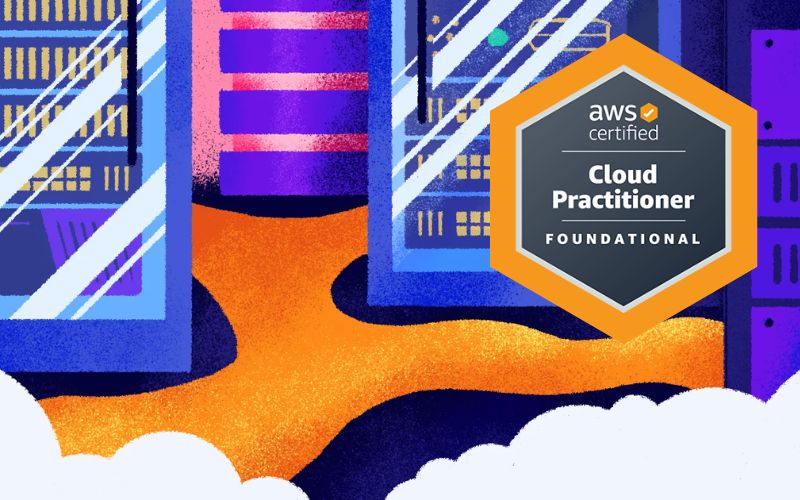
At the foundational level of the AWS learning pathway, professionals can pursue the AWS Certified Cloud Practitioner certification.
- AWS Certified Cloud Practitioner: This course is suitable for people who have a basic grasp of the AWS cloud platform. Candidates should have at least six months of industry experience in the AWS cloud area before taking this test. This exam focuses on the core components of the AWS cloud, such as how to manage global infrastructure, fundamental architectural concepts, the AWS value proposition, basic security and compliance issues, pricing structures, and so on.
2. Associate level
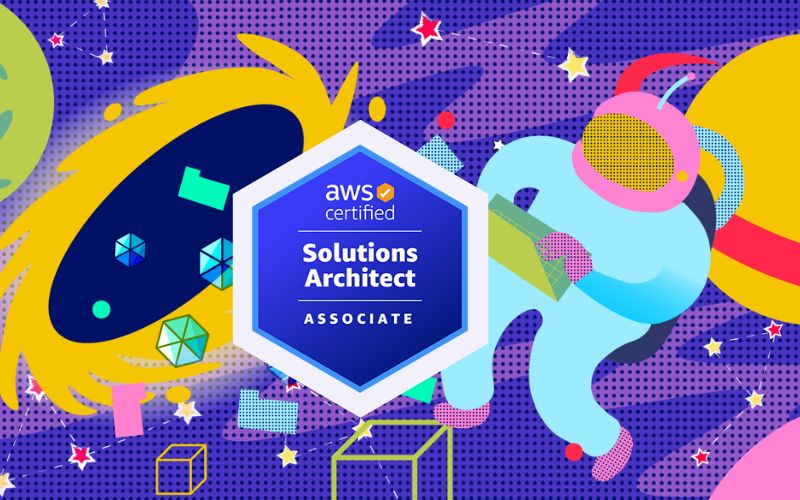
Following that, professionals can pursue three associate-level qualifications. This covers the courses AWS Certified Solutions Architect, AWS Certified Developer, and AWS Certified SysOps Administrator.
- AWS Certified Solutions Architect: Participants must show their ability to design, manage, and organize AWS installations in order to get this certification. Candidates are expected to address infrastructure management and related issues throughout the test. As a result, they must be knowledgeable in IT infrastructure engineering, AWS utilization data management, structural plans and standards, capacity optimization, utilization measurement across project lifecycles, and so on.
- AWS Certified Developer: This certification requires a good understanding of programming languages, as well as an in-depth comprehension of the AWS admin panel and critical AWS engineering best practices. Furthermore, one must be familiar with the optimum sequence of events, the configuration and analysis process of cloud-based applications, and other related software development principles.
- AWS Certified SysOps Administrator: The systems operations or SysOps administration certificate focuses on production settings and how to maintain them. Candidates should learn about AWS application hosting, information transportation between server farms and AWS, selecting the right AWS administration for the related needs, AWS cost vs. utilization analysis, and operational cost management tools.
3. Professional level

After completing the fundamental and associate levels, you are eligible for AWS professional certifications. At this point, you have two choices: AWS Certified Solutions Architect – Professional or AWS Certified DevOps Engineer.
- AWS Certified Solutions Architect – Professional: This certification is open to professionals with two years of experience as solution architect in the cloud industry. It is recommended (but not required) that you pass the AWS Certified Solutions Architect – Associate exam before taking this examination. This test assesses one’s skills and talents in a range of areas, including cloud application requirements, cloud engineering planning and organization on AWS, cost-cutting methods, and so on.
- AWS Certified DevOps Engineer: To pass this certification test, you should have at least two years of relevant experience delivering and overseeing AWS designs. Before taking the certification test, there are two preliminary alternatives. Depending on their professional path, individuals must either pass the AWS Certified Developer – Associate exam or the AWS Certified SysOps Administrator – Associate exam. An AWS Certified DevOps Engineer works on continuous delivery (CD) strategies, log frameworks, and other related tasks.
4. Specialization level
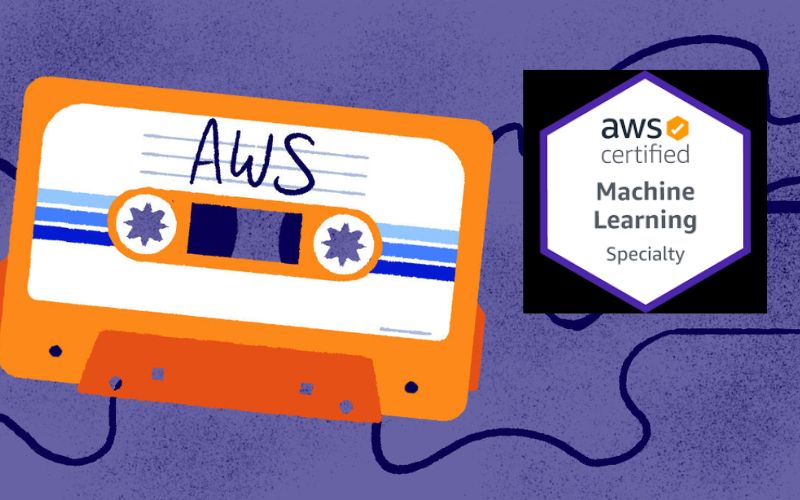
After obtaining fundamental, associate, and professional level certificates, a candidate can advance to specialized options. At this stage, they have a choice of four possibilities.
- AWS Certified Machine Learning: Candidates must have two or more years of experience working with machine learning (ML), as well as deep learning design and events. They should also be able to manage ML workload errors utilizing AWS cloud tools. The certification validates your knowledge of designing, deploying, and managing ML systems on AWS.
- AWS Certified Advanced Networking: This certification validates a candidate’s competence to manage complicated network and system-related activities on AWS. You must hold AWS Certified Cloud Practitioner certification or any other associate-level qualifications, such as architect, operations, developer, and so on, before deciding on this certification. This certification test requires at least five years of expertise in the design and implementation of enterprise network infrastructure.
- AWS Certified Data Analytics: This course validates a person’s data analytics aptitude as well as their ability to generate and deliver big data analyses utilizing AWS services. People must have at least five years of expertise in data science and business intelligence tools, as well as at least two years of active experience in AWS infrastructure, before taking this test.
- AWS Certified Security: This certification validates your knowledge of AWS security. The candidate must have at least two years of experience implementing cloud security measures in order to get this certificate. They should also have at least five years of experience designing and deploying security technologies utilizing proprietary and open-source code repositories.
In addition to comparing and contrasting these AWS certification levels, you should also understand clearly the differences between AWS Solutions Architect vs Developer to make the right choices for yourself.
AWS Exams And Exam Questions
Amazon Web Services awards AWS certification to those who demonstrate the necessary knowledge, skills, and abilities. The organization works with AWS experts to set the standard for required expertise in popular cloud job roles as well as technical abilities in specific areas. To demonstrate completion of this requirement, one must attend and pass one of the company’s AWS certification examinations; as a consequence, AWS rewards the individual with an AWS certification.
To obtain the certification, you must pass a timed, proctored exam. Each test contains a predetermined amount of questions, a time restriction, and a pass/fail result. Before taking the test, candidates should go through sample questions like the ones below and take a few practice tests online. This ensures that you understand the topics to be covered, what is not covered, relevant hands-on experience, and other requirements.
SAMPLE 1:
A company is migrating its application landscape to the AWS cloud. To complete the work, it will need to deploy up to 40 m4.4xlarge instances. What should a cloud engineer or infrastructure manager do before launching the instances?
- Before making the request to launch the instances, reserve 40 Elastic IP addresses.
- Submit a request for an increase in service limits to AWS support, providing the instance type and location.
- Before starting new instances, use AWS Trusted Advisor to increase the service limit.
- In the AWS Service catalog’s default service limit, update the instance count.
SAMPLE 2:
A firm is developing a widely accessible internet application using stateless web servers. What services are most suited for storing session state data? (Select any two of the five options below.)
- CloudWatch.
- DynamoDB.
- Elastic Load Balancing.
- ElastiCache.
- Storage Gateway.
SAMPLE 3:
An enterprise has developed a file gateway to keep copies of customers’ hard drives in Amazon S3. An administrator observes that most files are no longer accessible after 30 days while doing a normal examination. What is the greatest way for the administrator to save money on storage while still enabling users to view the files?
- Create a lifecycle policy that directs files older than 30 days to be moved to the rare access storage class.
- Create a bucket policy that restricts user access to just recent files (those produced in the last 30 days).
- Create a policy to migrate files older than 30 days to the Amazon Glacier storage class.
- To ensure that all copies of the files are kept, enable versioning on the S3 bucket.
Sample 4:
The logs are saved to an S3 bucket by an application. For troubleshooting purposes, a user wishes to store the logs for one month and subsequently delete them. What feature will make this possible?
- Enabling cross-origin resource sharing (CORS) on the S3 bucket.
- Setting lifecycle configuration rules on the S3 bucket.
- Inserting a bucket policy on the S3 bucket.
- Creating an identity access management (IAM) policy for the S3 bucket.
Sample 5:
A developer team is migrating a Ruby-based web application to AWS. The application should be easy to scale, need minimal maintenance or upkeep, and be simple to update with new versions. Which AWS service will be able to meet these requirements?
- The AWS Code Pipeline.
- Elastic Beanstalk from AWS.
- Lambda on AWS.
- AWS EC2.
Sample 6:
An application running on EC2 instances consumes sensitive data stored on Amazon S3. These programs use the internet to obtain data. According to security experts, connecting to Amazon S3 through the internet constitutes a security risk. What is the most effective strategy to deal with the security threat?
- To gain access to it, use a network address translation (NAT) gateway.
- Use an internet gateway to gain access to it.
- It is accessible via an Amazon S3 virtual private cloud (VPC).
- You can connect to it via a virtual private network (VPN).
Sample 7:
To launch a setup script, a system administrator needs the public IP address of an Amazon EC2 instance. What is a straightforward method for a system administrator to retrieve an IP address?
- From the operating system of the EC2 instance.
- From Amazon machine images (AMI) used to launch the EC2 instance.
- From the instance metadata.
- From user data.
Sample 8:
Company salesmen upload daily sales figures. A solutions architect needs a long-term storage solution for these records, as well as protection against users mistakenly deleting critical data. Which activity will aid in the prevention of unintentional user behavior?
- Save data in two distinct S3 buckets in two different AWS regions.
- Save data in an elastic block store (EBS) volume and take snapshots on a weekly basis.
- Save data to EC2 instance storage.
- Save data in an S3 bucket and enable versioning.
Sample 9:
A business intends to migrate its on-premise programs and data to the cloud, including 500 TB of data to Amazon S3. All of the time, cost, and performance aspects must be considered. What is the most efficient and cost-effective way to carry out the cloud migration activity?
- Install numerous instances of the AWS Snowball client with various Snowball apps on multiple workstations.
- Use numerous AWS Snowball instances in combination with various AWS Snowball edge apps.
- Over the network, copy the data from the on-premises network to the destination S3 bucket.
- Create an on-premise copy utilizing the file gateway mount point by using an AWS storage gateway (file gateway type) and facilities.
Sample 10:
An application’s initial storage capacity must be 8 TB, and it must be a highly accessible relational database. The database will increase by 8 GB per day. To handle the projected demand, managing database reads will necessitate at least eight copies. Which option best fits these requirements?
- DynamoDB
- Amazon Redshift
- Aurora from Amazon
- S3 from Amazon
Through numerous online sites, candidates will find a plethora of data regarding AWS tests and their preparations. Keeping all of the essential stuff in one place or saving it for future reference, on the other hand, can be difficult and time-consuming. As a result, it is important to consult the official AWS certification site as well as the company’s online skill-building platform. These websites provide a wealth of materials to help you prepare for AWS exams.
Exam guides are also provided by the firm and are based on information obtained from subject matter experts (SMEs), who also contribute in the design phase of new or amended tests.
Each test program also includes a job task analysis (JTA) session delivered by the AWS certification team. SMEs offer comments on the knowledge, skills, and abilities that practitioners in relevant work roles must have in order to perform well during this session. They also advise on whether AWS services should be included or eliminated from the exam, what to include for each topic area, and how much experience practitioners should have before taking the exam.
AWS Exam Cost
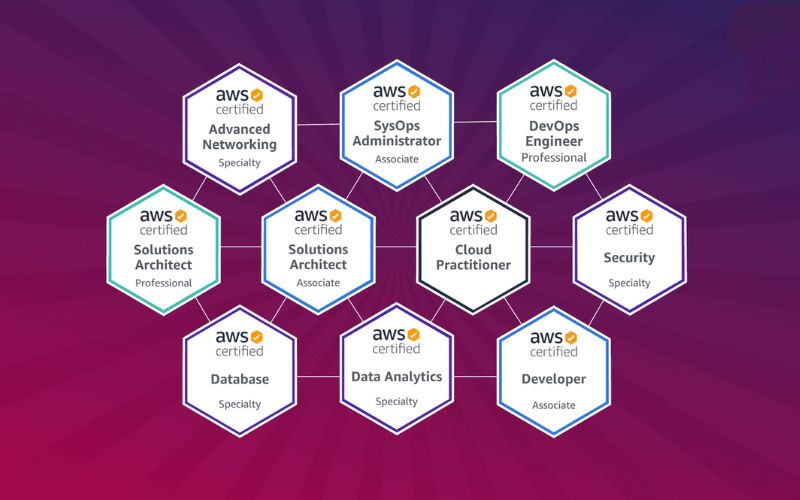
Subject matter experts methodically develop the AWS certification examinations to assess a candidate’s knowledge, skills, and aptitude to use AWS products and services. A content overview encompassing the test guidelines (domains, aims, and the proportion of questions in each domain) is accessible for each exam. The exam guides are available for download on the AWS certification website.
Although it is possible to take an AWS certification without any prerequisites, the business recommends that you have the necessary hands-on experience for each test. It also offers training courses and resources to help you learn the information and abilities required to pass each certification.
Applicants between the ages of 13 and 17 are also permitted to take the AWS certification examinations with the agreement of a parent or legal guardian. A test normally consists of 65 multiple-choice questions and takes 130 minutes to complete.
As an examination fee, one can expect to pay the following:
- Foundational certification costs around $100,
- Associate certification costs around $150.
- Professional qualifications cost around $300.
- Specialty certificates cost around $300.
The length of time needed to study for AWS certification tests is based on the topic under consideration, prior knowledge, and learning rate. It also relies on how much time one has available for preparation. In theory, if a person commits to 60-90 minutes of study time every day, they should be able to prepare for the tests in the following timeframes:
- WS Certified Cloud Practitioner takes two to four weeks
- Exams at the associate level, such as the AWS Certified Solutions Architect Associate or AWS Developer Associate, take four to twelve weeks.
- Professional or specialty-level tests take eight to twelve weeks
Keep in mind that these are merely estimations, and the time necessary for preparation will vary from person to person. The primary focus should be passing the real test, so take as much time as you need. Taking practice tests and looking through AWS exam sample questions during your study time may be an excellent way to track your progress and preparedness.
FAQs

I’m new to Cloud, where to start?
Our advice is, to begin with the AWS Solution Architect Associate. This certification is intended for those with both technical and non-technical backgrounds who wish to learn more about the AWS cloud and fundamental AWS services. Once you’ve completed this, you can advance to associate-level or professional certificates.
What are the best ways to prepare for the AWS Cloud Certification Exam?
This varies from person to person, however, we strongly recommend seeing the live session recording, as well as time spent interacting with the AWS interface. This enables you to carry out lab/Activity Guides.
Tips:
- To pass AWS certification, you must get your hands dirty with AWS, which can only be accomplished by utilizing all of the AWS services covered in the certification program.
- So, our recommendation is to finish the course and then attempt it again without following the course. Try experimenting with AWS. Create little projects to practice and learn AWS. When studying and preparing for the test, there is no shortcut to understanding AWS.
What’s next after AWS Solution Architect Associate?
The first step after getting the Solutions Architect Associate certification is to begin your cloud career. When compared to other associate-level examinations, the Solutions Architect test is more difficult since it demands knowledge of practically all AWS Services. You now have the opportunity to choose whatever job path you wish to pursue. You have the option of taking the Developer, SysOps, or Professional level exams.
Why should I earn the AWS Cloud Certification?
Earning an AWS certification may not only boost your chances of getting that next job interview, but it may also open up options for a long-term, successful career path.
- More than 80% of people earn more money as a direct result of their cloud certification.
- According to Global Knowledge, IT workers who learn new skills and/or certifications are more likely to receive an average increase of $12,000 to $13,000.
Is AWS Certified solutions architect worth it?
Final Words
In conclusion, becoming an AWS Solution Architect can open up exciting career opportunities and lucrative salaries. Our guide has provided a comprehensive overview of the AWS Solution Architect certification path, including the different certification levels, exam content domains, recommended training, and exam preparation resources. With the demand for AWS expertise on the rise, obtaining an AWS Solution Architect certification can be a valuable asset in your professional career. As AWS technology continues to evolve, staying up-to-date with the latest developments can ensure long-term success in this field. So, start your journey on the AWS solution architect certification path today and advance your career in the cloud computing industry.

